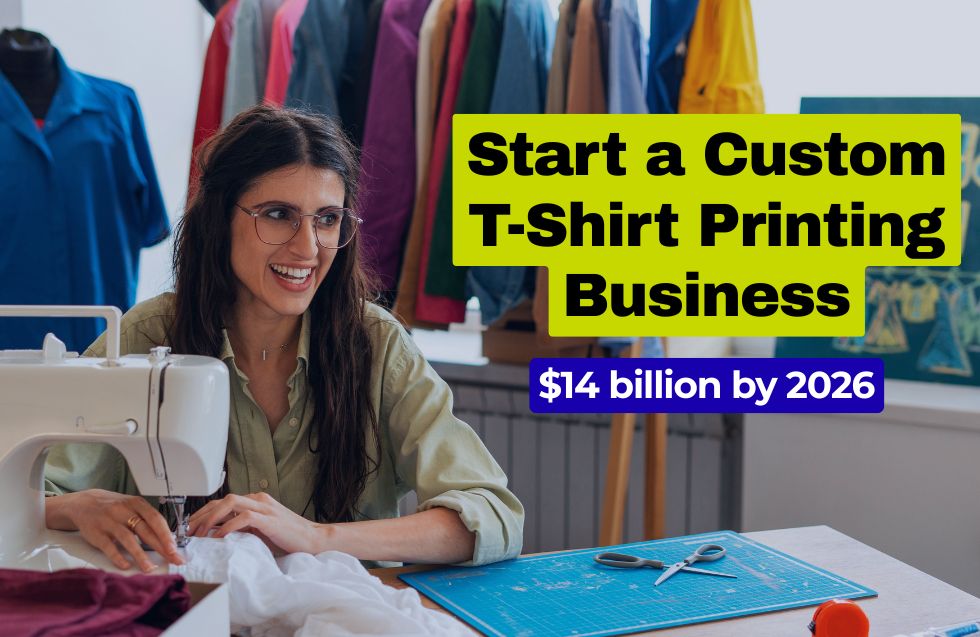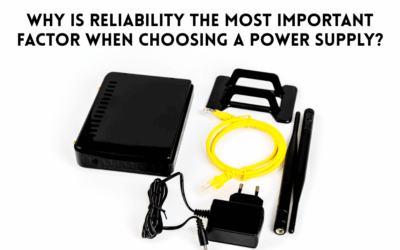The International T-Shirt printing market is projected to hit more than $14 billion by 2026, the momentum is more robust than ever. From solo artists on TikTok to full-fledged apparel brands on Shopify, the business of custom t-shirt printing has evolved into one of the most reachable means of starting a brand.
But here’s the truth: The marketplace is saturated. Consumers aren’t searching for another humorous slogan on a low-cost cotton t-shirt. They’re calling for sustainable material, creative designs, fast delivery and an excellent brand narrative. To succeed, you have to learn what these demands are and make changes.
This guide distills it down into real steps with realistic strategies that function in 2025.
Why a T-Shirt Business Succeeds in 2025
T-shirts are ageless. But what turns them into a lucrative venture in 2025 is the change in consumer attitude:
- Personalization: From weddings to corporate board meetings, people are interested in custom clothing.
- Sustainable consumers are here for the long haul: Customers are becoming more engaged with organic cotton, bamboo fabrics and recycled fabrics. Brands featuring sustainability command premium prices.
- Local pride: City-based humor, regional languages and cultural references are flying off the shelves. In India, for instance, “meme tees” in Tamil and Hindi are hot sellers.
- Expectations of fast shipping: With Amazon Prime and on-demand sites, customers are now looking to have their orders delivered within a week. POD suppliers are now offering 2–5 day delivery worldwide.
- Social selling reigns: Instagram Reels, TikTok Shops and YouTube Shorts fuel impulse buys. One viral video can sell a thousand shirts overnight.
Reality: In 2025, your home-based custom t-shirt printing business will succeed if you are able to combine creative ideas with clever execution.
Step 1: Select the Correct Business Model
1. Print-on-Demand (POD) Services
Print-on-Demand (POD) services like Printful, Printify, Gelato, Teespring and Etsy POD integrations allow you to create, upload and sell your designs. They take care of printing, packaging and shipping. Zero upfront cost. Easy to test multiple designs. Lower profit margins (you make $5–$10 per shirt on average). Less control over packaging and branding.
2. Printing at Home (Starter Kit / Own Machine)
Here, you invest in your own t-shirt print business machine (such as DTF or DTG) and do production. Higher profit margins (up to $15–$20 per shirt). Complete control over quality and packaging. Involves investment ($1,000–$5,000+). You manage inventory, shipping and returns.
2025 Trend: Most entrepreneurs start with POD to test demand before they purchase their own DTF printer once they know which designs are selling.
Step 2: Learn About Printing Methods
In 2025, technology has advanced and streamlined printing. Here are the best ways:
- Heat Transfer Printing
- Utilizes heat and transfers paper to print.
- Inexpensive and easy for newbies.
- Less long-lasting for bulk orders.
- Screen Printing
- Optimal for bulk orders.
- Cost-effective for bulk.
- A messy and impractical experience for a small apartment.
- DTG (Direct-to-Garment)
- Prints directly on fabric.
- Ideal for intricate, colorful designs.
- Equipment is expensive, maintenance is complicated.
- DTF (Direct-to-Film)
- Prints on film, then transfers to fabric.
- Works well on most fabrics (polyester, cotton and blends).
- Cheaper than DTG, growing in popularity in 2025.
- Requires consumables (powders, films).
- Sublimation
- Printing Impregnates dye into the polyester fabric.
- Ideal for sportswear and all-over prints.
- Fails to print well on cotton.
Reality Check: In 2025, DTF printing is ruling small businesses as it balances cost, versatility and quality.
Step 3: Research What’s Selling in 2025
Beginners make the mistake of printing designs they “find cool.” Instead, research what is actually selling:
- Streetwear: Large t-shirts with big typography.
- Minimalist styles: Basic line drawings or plain text.
- Local humor: City jargon, cultural memes or festival-related designs.
- Eco slogans: “Recycled cotton made,” “Planet first, not profit.”
- Corporate brandings: Startups placing bulk orders for team shirts.
Where to Research Trends
- TikTok and Instagram hashtags: For example: #graphictees #streetwearfashion
- Etsy bestsellers: Review best selling niches.
- Google Trends: Look up what people are searching for.
- Reddit Communities: Both Streetwear and Entrepreneur have amazing insight.
For example, a small brand from India had a viral moment in 2025 with their festival themed t-shirts that used local slang during Holi and Diwali.
Step 4: Create Designs Customers Actually Want
In 2025, design is easier than ever, since most tools rely on AI to improve the design.
- Use a tool like Canva AI or possibly Adobe Firefly for inspiration.
- Get inspiration from Pinterest mood boards.
- Outsource designs cheaply via Fiverr or Upwork if you’re not artistic.
Pro Tip: Pre-launch, share mockups on social media and get followers to vote. This is free testing and pre-launch buzz.
Step 5: Launch Your Online Store
Selling in 2025 is not about “creating a website.” You have a multi-platform approach:
- Shopify + POD → Ideal for building a long-term brand.
- Etsy + POD → Simple to achieve organic traffic for niche designs.
- TikTok Shop & Instagram → Social-first selling.
- Amazon Merch → Extremely exposure but competitive.
- Flipkart/Myntra (India) → Good for scaling locally.
Reality Check: A lot of new sellers in 2025 begin with Etsy + Printify. It’s low-risk and gets organic sales without advertisements.
Step 6: Marketing That Works in 2025
The #1 reason that most t-shirt printing ventures fail isn’t design or quality, it’s bad marketing.
Here’s what’s currently working:
Short-Form Video Marketing
- Display packaging, customer reviews, styling tips.
- One TikTok can sell hundreds of tees in a day.
Micro-Influencers
- Collaborate with micro-creators having 1,000 to 10,000 followers.
- More engagement, lower rates than influencers.
Community Building
- Create a fan base using Discord or Telegram.
- Give exclusive drops or discounts.
SEO and Content Marketing
- Publish a blog post titled, “Best printing machine for t-shirt printing in 2025” or “How to get started with a t-shirt business from home for free.”
- Search to optimize for long-tail keywords to rank on Google.
For example, a brand launch in the US in 2025 saw an increase in customers reached when the brand published back-of-the-house videos packaging t-shirts, because their customers loved that personalized feel to their brand.
Step 7: Scale Your T-Shirt Business
Once you’ve made your first $1,000, it’s time to think bigger.
- Invest in a DTF Printer → More profit per shirt.
- Offer Bulk Orders → Local schools, companies, sports teams.
- Expand Products → Hoodies, caps, tote bags, phone cases.
- Go Sustainable → Organic cotton tees command higher prices.
- Simplify Shipping → Partner with the local courier service to increase speed.
Reality Check: Scaling isn’t just about printing more copies. It is about getting repeat buyers and pushing up margins.
Common Problems in 2025
It’s not always fun and games. Here are the facts most home t-shirt companies are dealing with:
- High Competition – Thousands of vendors on Etsy, Shopify and TikTok.
Solution: Niches + solid branding.
- Customer Expectations – Quick shipping & environment-friendly packaging.
Solution: Utilize POD providers with local warehouses or inventory stock yourself.
- Increased Ad Costs – Facebook & Google ads are costly.
Solution: Prioritize organic growth through TikTok/Instagram.
- Quality Issues with POD – All POD providers do not have premium quality.
Solution: Get samples prior to going live.
FAQs- Starting a Custom T-Shirt Printing Business in 2025
Q1: Is a t-shirt printing business profitable in 2025?
Yes. POD provides lower margins (15–25%), but with your own printer, scaling increases profits to 50%+.
Q2: What’s currently the most popular style?
Oversized streetwear, simple designs and eco-friendly materials.
Q3: Can I begin a custom t-shirt printing business for free?
Yes, POD needs no initial investment.
Q4: What is the ideal starter kit for a t-shirt business in 2025?
A heat press machine, DTF printer, blank organic cotton tee shirts and design software.
Q5: How much t-shirts constitute 1kg?
Approximately 3–4 light cotton t-shirts.
Q6: Why do most t-shirt businesses fail?
Lack of niche focus + poor branding.
Conclusion
Starting up a custom t-shirt printing business from home in 2025 is one of the most achievable methods of bringing creativity into earnings. Success, however, takes more than simply printing a sweet design. You must:
- Choose the correct business model (POD vs. own setup).
- Make designs people want.
- Utilize social media and influencers.
- Ship fast and with high quality.
- Scale wisely by going into bulk orders and green products.
If you remain consistent and keep up with trends, your home t-shirt brand can grow into a real most demanding clothing business.
Ready to launch? Start today with POD platforms like Printify and test your first designs. Once you sell your first 50 shirts, consider upgrading to DTF for higher profits. For more practical investment tips, see our latest guide: “Scaling Your T-Shirt Business: When to Invest in Better Printing Machines”












